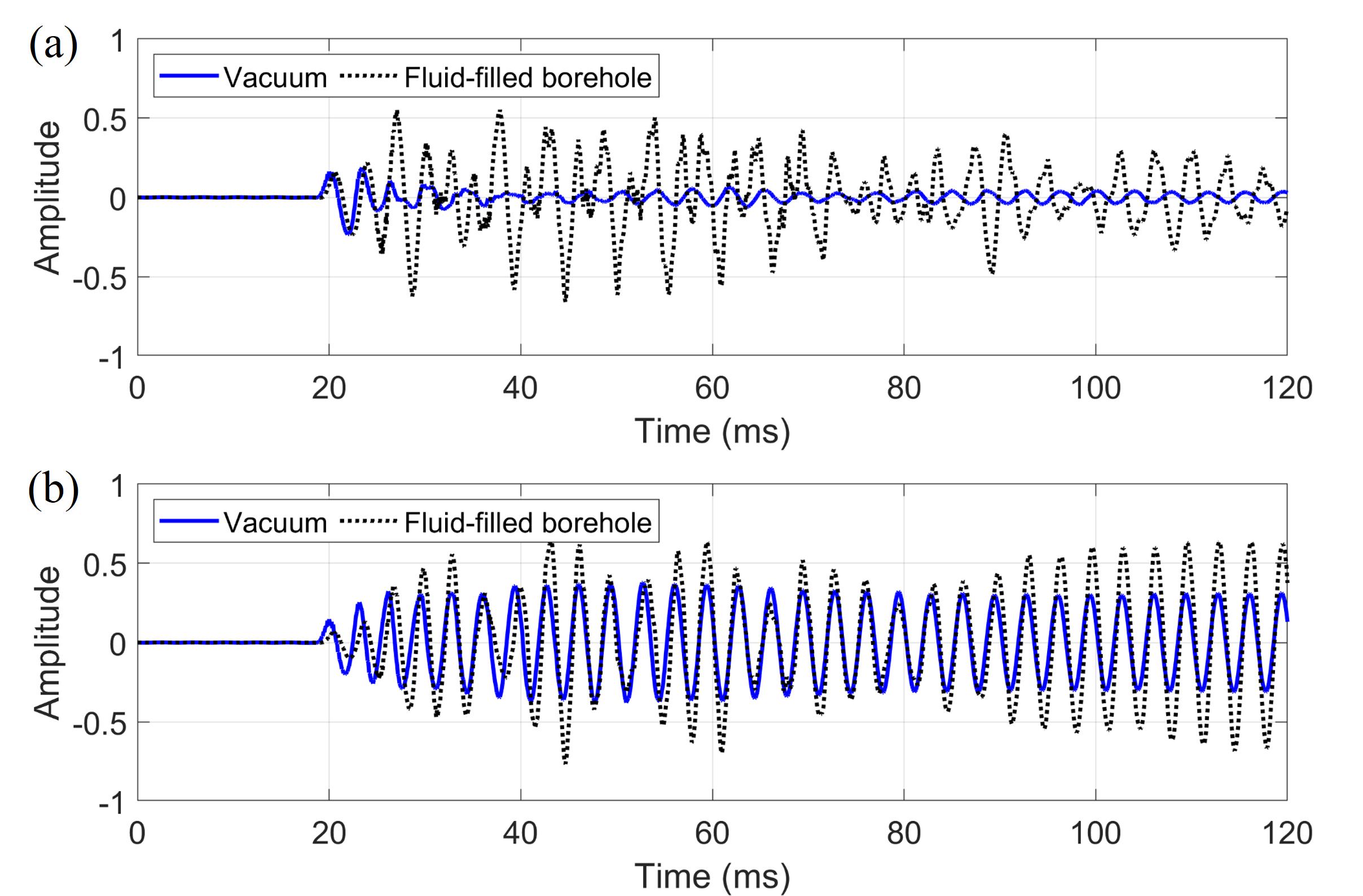In logging while drilling (LWD), one of the biggest challenges in upgrading from "acoustic measurement" to "intelligent guide drilling" is that the transmission rate of downhole telemetry is too low to achieve real-time and effective formation evaluation. Using drill-string guided waves as a carrier for data telemetry is a novel idea. It has started to attract the attention of the international oil industry in recent years because of its potential advantages, such as low deployment cost, high channel capacity and wide scenario adaptability. The crucial issue for applying this technology is the propagation characteristics of the periodically structured guided waves in the fluid-filled borehole.
To address this issue, researchers from the Institute of Acoustics of the Chinese Academy of Sciences (IACAS) proposed a modeling method of the drill-string acoustic channel for downhole telemetry. They attributed the propagation characteristics of the two-dimensional LWD wavefield to the analytical solution of the axial wave number and excitation function. On this basis, they developed a one-dimensional equivalent channel model using the propagation matrix method, in which the interconversion effect between the drill-string wave and the fluid wave at the tool joint was particularly considered. The derived full-wave channel function could effectively simulate acoustic responses of the periodic pipes in the liquid-solid coupled cylindrical waveguide.
The computational results show that the fluid-filled borehole environment leads to significant changes in bandgap distributions of the channel compared to the free drill string scenario. The multipath time delay of the channel in the time domain corresponds to the frequency domain facing a large-scale frequency selective fading, manifested by the amplitude characteristics of the discrete band gap and the phase characteristics of the nonlinear distortion. And in terms of the propagation mechanism, the multipath effect of the drill-string channel not only refers to the delayed arrival of the carrier signal along multiple paths but also contains the coupled transmission of carrier components with different velocities.
This novel phenomenon is attributed to the acoustic properties of the liquid-solid layered waveguide. This research helps to promote downhole acoustic telemetry from conception to application.
The research, published online in the international academic journal Petroleum Science, was supported by the National Natural Science Foundation of China (Nos. 12174421, 11734017) and the Scientific Instrument Developing Project of the Chinese Academy of Sciences (Nos. YJKYYQ20200072, GJJSTD20210008).

Figure.1 One-dimensional equivalence of the drill-string acoustic channel. (Image by IACAS)

Figure.2 Calculations of the full-wave channel function, covering the (a) time-domain impulse, (b) amplitude-frequency and (c) group delay responses. (Image by IACAS)

Figure.3 Transient characteristics of the carriers transmitted in the channel (a) stopband and (b) passband. (Image by IACAS)
Reference:
ZHAO Aosong, HE Xiao, CHEN Hao, WANG Xiuming. Response analyses on the drill-string channel for logging while drilling telemetry. Petroleum Science, 2023. DOI: 10.1016/j.petsci.2023.03.007.
Contact:
ZHOU Wenjia
Institute of Acoustics, Chinese Academy of Sciences, 100190 Beijing, China
E-mail: media@mail.ioa.ac.cn


